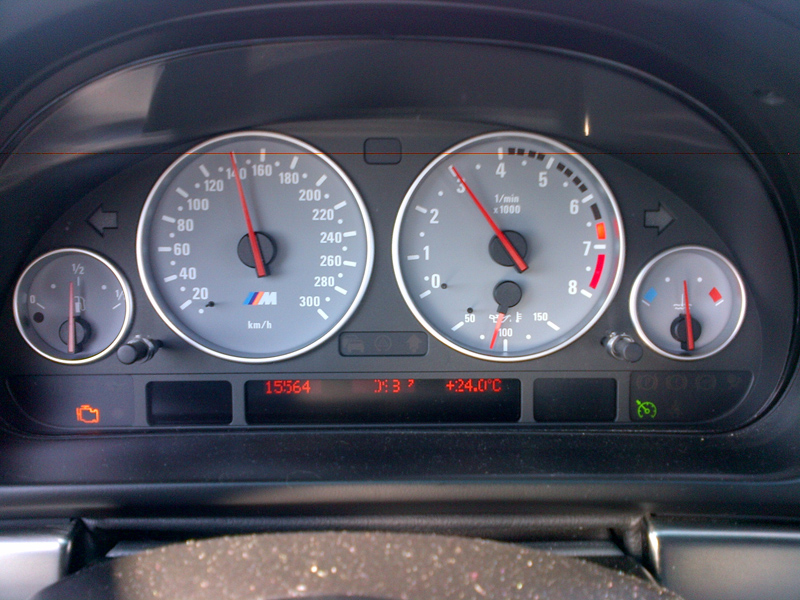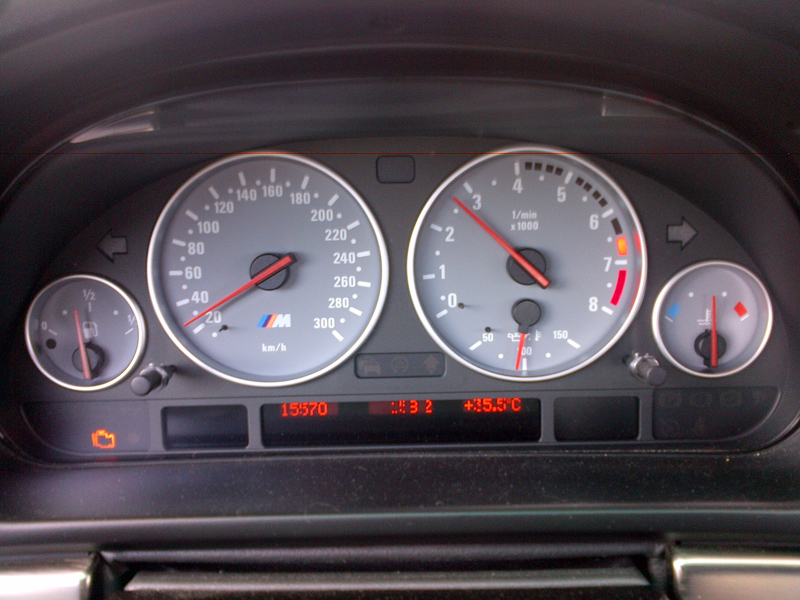Hello fellas. Interesting UOI results that I'd like to share:
Car: 1993 Mercedes 400E (32 valve V8, 275HP (when new)
Mileage on the car: 105k miles
Mileage on oil 5,025 miles/9 month
I'm in Los Angeles, CA. Bought the car locally. Odometer read 98k miles. History suggests it was at least mostly a California car. It appeared to be well kept and in close to excellent condition
I changed the oil at exactly 100,000k on the odometer to top shelf synthetic at local Autzone: the Castrol Edge 10W-40 (did not "fluid titanium technology on the bottle, otherwise black bottle) at $9 something per quart. Oil change was done in September 2014 and oil was bought then. I did not check the bottle, but I assume it was the SN certified version.
The car is driven in severe conditions of the stop-and-go in crazy LA traffic, with lots of short trips, and lots of WOT.
Additionally, and it should be an interesting detail to you gearheads, this type of Mercedes likes to run hot. The red zone is at 125C and the owners manual explicitly states that everything up to that temperature is OK. Often times my car sits at 100C, and almost as often it hits 105C at which auxiliary fans come on at high speed and knock down the temp to 98C, which returns to 105C in several minutes of stop-and-go LA traffic in usually warm to hot weather.
Do not that 100C and 105C is temperature of the coolant, so oil must be even hotter (so I think). Occasionally and very dense, uphill traffic, if temp hits 105C and fans come on, but I'm driving stop-and-go uphill (no air movement through radiator) I've seen temp hit 110C before being brought down by the fans.
Additionally I should not the WOTs happened numerous times at 105C and at 110C. The highest coolant temp I've seen is 115C in 95F weather, with 4 people in the car and A/C on, going uphill on the freeway at WOT at 95MPH.
Also the car has seen 140MPH a few times. And lots of 40mph-110mph freeway entrances
So you get that the car runs hot and is driven briskly often with multiple WOTs. So how do you like my UOA and what are your thoughts on Castrol Edge 10W-40, which apparently is not even a premium formulation compared to other grades of Castrol!!!
Your thoughts on the subject and random, and comments are welcome!

Anyone know why Boron could be so high? Interestingly, BlackStone did not comment on it...

хос...090;о
Car: 1993 Mercedes 400E (32 valve V8, 275HP (when new)
Mileage on the car: 105k miles
Mileage on oil 5,025 miles/9 month
I'm in Los Angeles, CA. Bought the car locally. Odometer read 98k miles. History suggests it was at least mostly a California car. It appeared to be well kept and in close to excellent condition
I changed the oil at exactly 100,000k on the odometer to top shelf synthetic at local Autzone: the Castrol Edge 10W-40 (did not "fluid titanium technology on the bottle, otherwise black bottle) at $9 something per quart. Oil change was done in September 2014 and oil was bought then. I did not check the bottle, but I assume it was the SN certified version.
The car is driven in severe conditions of the stop-and-go in crazy LA traffic, with lots of short trips, and lots of WOT.
Additionally, and it should be an interesting detail to you gearheads, this type of Mercedes likes to run hot. The red zone is at 125C and the owners manual explicitly states that everything up to that temperature is OK. Often times my car sits at 100C, and almost as often it hits 105C at which auxiliary fans come on at high speed and knock down the temp to 98C, which returns to 105C in several minutes of stop-and-go LA traffic in usually warm to hot weather.
Do not that 100C and 105C is temperature of the coolant, so oil must be even hotter (so I think). Occasionally and very dense, uphill traffic, if temp hits 105C and fans come on, but I'm driving stop-and-go uphill (no air movement through radiator) I've seen temp hit 110C before being brought down by the fans.
Additionally I should not the WOTs happened numerous times at 105C and at 110C. The highest coolant temp I've seen is 115C in 95F weather, with 4 people in the car and A/C on, going uphill on the freeway at WOT at 95MPH.
Also the car has seen 140MPH a few times. And lots of 40mph-110mph freeway entrances
So you get that the car runs hot and is driven briskly often with multiple WOTs. So how do you like my UOA and what are your thoughts on Castrol Edge 10W-40, which apparently is not even a premium formulation compared to other grades of Castrol!!!
Your thoughts on the subject and random, and comments are welcome!

Anyone know why Boron could be so high? Interestingly, BlackStone did not comment on it...

хос...090;о
Last edited:




